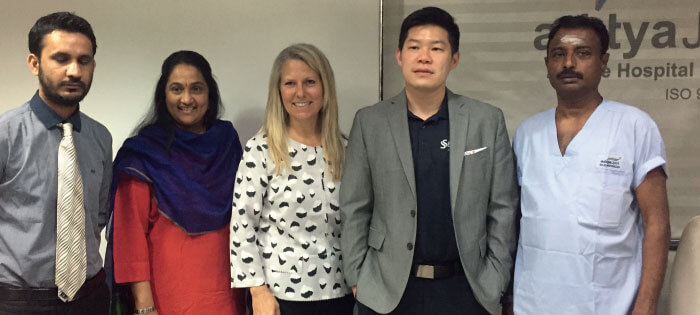
- GoCheck Kids is a smartphone-based application that allows pediatricians to screen for serious eye disorders – without the need for specialist equipment
- The app is designed to identify amblyopia risk factors such as myopia, hyperopia, anisometropia, and astigmatism, and may also identify retinoblastoma and cataract, amongst other correctable visual disorders
- As it is both low cost and easy to deploy, it is well suited to healthcare workers in the developing world
- GoCheck Kids has run screening pilots in India, Nigeria, Ecuador, and Myanmar with partners such as Santen Pharmaceuticals – with more sites on the horizon.
Once upon a time, vision screening for children was simple – all it took was a visual acuity chart. However, although it was inexpensive, positive predictive value was low because young children are often unable to truly comprehend the test, which is clearly problematic. For kids to have a good chance of visual recovery, they need to be tested before the age of five – after that age, the efficacy of treatment starts to decline. This isn’t an issue just in developing countries. In 2016, the American Academy of Pediatrics recommended that children have their vision assessed annually, beginning between the ages of one and three, with an instrument-based technique. Which meant using a purpose-built device costing around $10,000 – beyond the reach of some pediatricians. GoCheck Kids was created as the antidote to this unmet need.
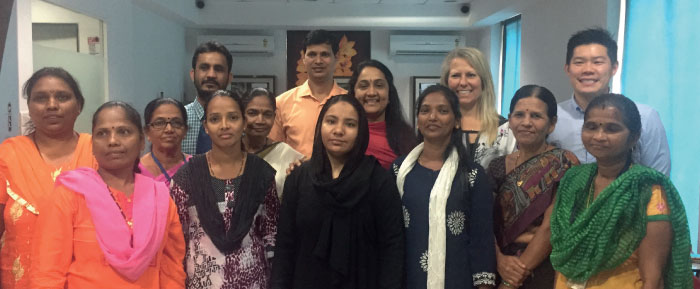
Our founder, David Huang, co-creator of OCT, came up with the idea after attending a conference with leading retinoblastoma specialist, Linn Murphree. It was there he noticed how few pediatricians offered vision screening for serious eye disorders. And it turned out there were two reasons why. The first was that most pediatricians were unaware that early screening could help detect disease and prevent vision loss. The second was that existing devices were extremely costly and most doctors didn’t know that the test could be reimbursed. Huang saw that there was a gap in the market for affordable and accessible pediatric vision screening – particularly for serious eye disorders like retinoblastoma and amblyopia. Huang decided to leverage the inbuilt features of a smartphone – camera and flash – to mimic a purpose-built device. The final result was low-cost and easy to deploy, and crucially, ideal at screening for disease. Like that, GoCheck Kids was born: a CE-marked, FDA-registered pediatric photo screening application that can detect amblyopia risk factors in kids. We quickly went into development mode, finally launching our product in 2014.
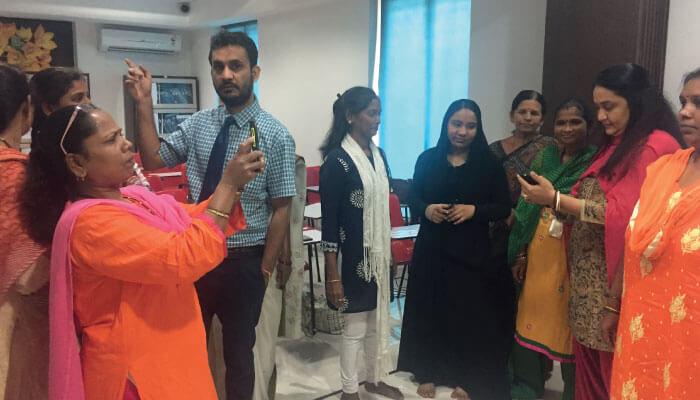
The app was – and is – very straightforward. The user takes a photo of the child’s eyes, guided by the app. Once the picture is taken, the software identifies the particular landmarks of the image. Proprietary algorithms evaluate the image and then calculate the results which are displayed immediately. In addition to calculating disorder for each eye separately, the software compares the difference in prescription between the two eyes, anisometropia – the number one risk factor in the development of amblyopia – to see if the child in question is at risk. These are then quantified, and if they exceed a certain risk threshold, the app informs the pediatrician who then refers the child to an ophthalmologist. GoCheck Kids is also capable of identifying risks for retina blastoma and cataract, amongst other sight-threatening conditions if they are in the visual path.
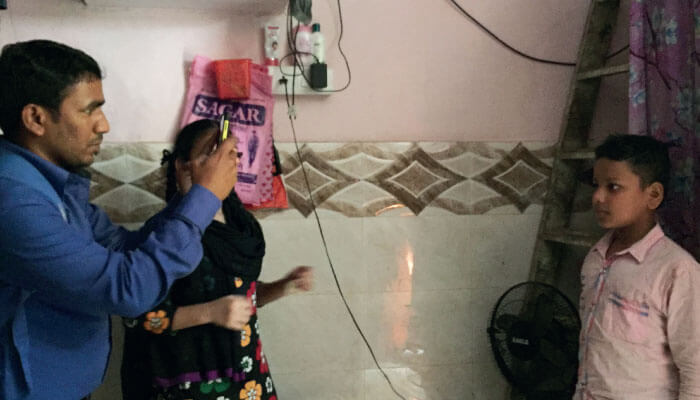
Today, more than 4,500 pediatricians use the app in the United States and even more worldwide. Because in truth, that is what GoCheck Kids is really about: making vision screening accessible to all. And that is truly where our story starts. Two years ago, we started the India project, in partnership with Santen Pharmaceuticals. The project’s mission was simple – to increase the number of children getting screened for serious diseases in India. We set our sights on the Aditya Jyot Foundation for Twinkling Little Eyes – a multi-speciality practice in Mumbai. It was the perfect location. Of the nine million people living in Mumbai’s slums, only 48 percent had access to healthcare facilities – leaving more than 4.6 million people without.
The Foundation did what they could to screen children who lived in the slums by offering mobile eye exams in a specially equipped van. Children would fill out a questionnaire before being checked by healthcare workers and optometrists. The process cost 500 rupees per child and took around 15 to 20 minutes. The Foundation was able to screen 200 kids a month – 3,000 a year – using his method, but it had its drawbacks. Not only was there the cost and logistical burden of running the van and assembling a full team twice a week, it was also often difficult to convince parents to let their children be screened at all. Even when the parents did agree, there was no guarantee the kids would have the level of comprehension required to understand the screening procedure and get an accurate result.
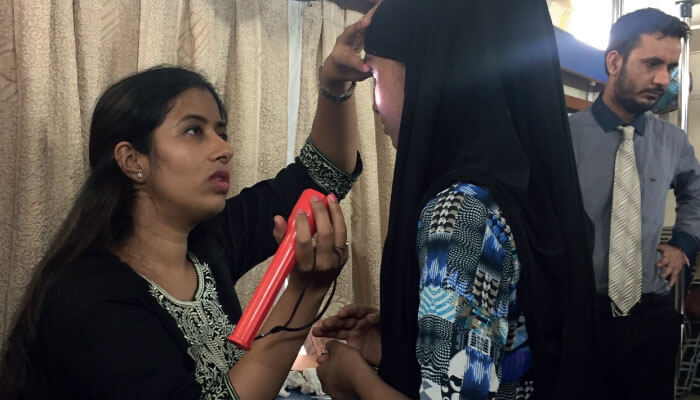
Enter GoCheck Kids. Our app gave healthcare workers a means of screening children in their own homes, leaving the van free for treatment. It would be easy to use, accurate and – most importantly – fast, allowing the team to test a greater number of children in a shorter space of time. But there were obstacles. First, we had to make sure the healthcare workers were able to use the app; consider that some outreach workers didn’t even own a cell phone, let alone an app, so we made sure to provide the appropriate phones and training. We also had to be sure the app would work without Wi-Fi – the answer was an offline function. The final challenge was convincing people to let us into their homes. Strangely, what seemed like our biggest obstacle was one of the easiest to overcome.
It took us a while to find a willing family, but it turned out one was all we needed. There was 10 people in the family – five of them children. We screened the kids first and were about to leave when the rest of the family asked to be checked too. By the time the healthcare workers were done, there was a line of 50 people waiting outside the door to be screened. The children had run outside and told their extended family, who told their neighbors, who then told their friends that we were there, and they all wanted to be tested too.
By using the app, the Foundation was able to screen 2,000 children a month instead of 250. As the app didn’t require an optometrist – just a trained healthcare worker – the Foundation was able to screen more frequently and for a significantly reduced cost. With the previous method, it cost 500 rupees to screen a child; with the app, it cost 80: success. The Foundation performed a sensitivity and specificity study to verify the results after the project, and fully committed to the program this year. We’re happy to say that with every risk factor identified, the cost of screening and treatment reduces – and more children get the care they need.
Luckily, our work is being recognized. Last year, we won the Impact Pediatric Pitch Competition at SXSW, as judged by representatives from eight top US children’s hospitals, including Boston Children’s Hospital and The Children’s Hospital of Philadelphia. And that really raised our profile in the USA. We’ve already started European distribution – our app is being used in 350 locations throughout Belgium – and we have plans to expand into Israel, Lebanon, France, and Brazil in the coming months. Our mission screening programs are also set to expand. We have completed projects in Myanmar and Ecuador, and have recently begun testing in remote areas of Nigeria. The hope is that GoCheck Kids will continue to expand, because, truthfully, the problem of vision screening isn’t going away. One in four children has a vision disorder, yet only 20 percent of children are screened. Since 80 percent of a child’s learning is visual, this needs to change and, hopefully, with the help of apps like GoCheck Kids, it will.
GoCheck Kids photoscreening procedure is commonly reimbursed using CPT Codes 99174 or 99177
